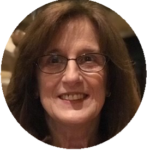The Mysterious World of Math

by Kathaleen Shelor
Mathematics, in a sense, is logic let loose in the field of the imagination.
I’m Trying to Love Math, a picture book by Bethany Barton (2019), is on display in my adult education classroom. Whenever I hear the infamous question, “When am I ever going to use this?”, I take a few minutes to read this humorous book that makes a difficult subject more meaningful. I’m Trying to Love Math contains many interesting ways that math is used in our everyday lives. You see, my first teaching objective is to address a fixed mindset that thinks mistakes and struggles mean you are not good at something. Studies provide proof of the importance of mindsets in student learning (e.g., Carol Dweck). There are many things that play a part in learning math, and genes are not really one of them. There is no such thing as a “math person”. Just inside the cover of Bethany’s (2019) book is a quote by Margaret Wertheim, “Mathematics, in a sense, is logic let loose in the field of the imagination” (unpaged).
I am continuously searching for ways to improve my teaching skills. Youcubed is a Stanford Center providing free and affordable mathematics resources and professional development. This website (https://www.youcubed.org) has been a valuable tool in my toolbox. The youcubed project is led by Professor Jo Boaler, a British author from Stanford Graduate School of Education. I participated in two of the courses offered through youcubed’s professional development and I gleaned much regarding being a research-based teacher. Jo encourages teachers to provide challenges and meaningful problems. Problems that require more than rote memorization or just step-by-step performance of a formula. Jo also emphasizes the importance of mistakes. Struggle and mistakes are good. That is when the brain is more active. Making mistakes is part of learning, and it provides the teacher the opportunity to model error correction.
Jo says, “Math is an open, visual, and creative subject.” Any math problem can be solved in a number of ways. People see math differently. I had the opportunity to model Number Talks in a few elementary schools in southwest and far southwest Virginia. Number Talks is a five-to fifteen-minute warm-up activity using mental math skills. Learners are given computation problems that they are to solve without pencil/paper. They share and defend their answers. I have modified the idea to fit the adult education classroom. Rather than use it as a warm-up, I incorporate the idea throughout math instruction. It involves all problem solving, not just mental math. It is the conversation that becomes the teaching tool. Responses to a math problem are recorded on the board, right or wrong. As students defend their answer, the class begins to see divergent ways to solve problems. Everyone learns in different ways.
Jo Boaler explains that students who learn methods and rules have to struggle to hold onto them. They are unable to organize and file them away in the brain for later use. Our brain can only compress concepts. For example, linear relationships is a concept and solving for x is a method.
One of my favorite activities from youcubed is “The Painted Cube”. Students are shown a cube made up of 27 smaller cubes. The larger cube is dipped into a bucket of paint. I use The Painted Cubes Animation up to when the painted cube is pulled apart. Math is all about finding patterns, and this problem allows students to see the importance of patterns to the understanding of mathematical concepts. I apply the Concrete-Representational-Abstract (CRA) method of instruction to work our way through using various size cubes. Keep in mind that the three “levels” of CRA are not necessarily linear. I begin with the animation, move to wooden cubes (or sugar cubes if you want to color them), and finish with questions such as “How many small cubes have 3 sides painted?” or “How many have not been painted at all?” The lesson concludes with “How many faces would be painted in a cube of any size?” The final step involves coming up with equations to fit any size cube.
Using manipulatives at the concrete level, as described in the Painted Cube activity, leads to greater understanding of abstract math concepts and increased student performance. They give students an understanding of the concept, so they are not just memorizing algorithms. Remember, the brain can only compress concepts. Learning theory and educational research support teaching with math manipulatives. Manipulatives have a place not only in elementary grades, but also in middle grades and high school.
John A. Van de Walle and LouAnn H. Lovin, co-authors of the book series Teaching Student-Centered Mathematics (2013), believe that teachers must create an environment where students are trusted to solve problems and work together using their ideas to do so. In a student-centered model, teachers facilitate lessons to empower students to build new math skills utilizing their prior knowledge. In the Painted Cube activity, students used their algebraic skills to create equations to fit cubes of any size. Math is made up of a few ideas and the connections between those ideas. It is putting numbers together or taking numbers apart as well as discovering the pattern or sequence of numbers. Math is a very mysterious connection to the real world.
One of Van de Walle and Lovin’s books begins with a quote by Lex Cochran (1991). “And once I had a teacher who understood. He brought with him the beauty of mathematics. He made me create it for myself. He gave me nothing, and it was more than any other teacher has ever dared to give me” (van de Walle et al., 2013, unpaged). As an educator, my first goal is to motivate students, then give them the opportunity to learn.
References
Barton, B. (2019). I’m trying to love math. Viking.
van de Walle, J. A., Lovin, L. H., Karp, K., & Bay-Williams, J. (2013) Teaching student-centered mathematics professional development series. Pearson.
 Kathaleen Shelor has enjoyed 48 years in the field of education. Her journey includes teaching at the preschool level up to and including serving as an adjunct professor at the university level. This journey has allowed her to provide professional development to teachers throughout southwest (SW) and far SW Virginia schools. She currently works as a high school equivalency instructor through the Workforce Development Program at New River Community College in Dublin, Virginia. Kathaleen received her bachelor’s and master’s degrees in education from Radford University. She is a certified professional developer through the Center for Research on Learning at the University of Kansas, and she has taken several courses through youcubed at the Stanford Center. She identifies as a research-based instructor who is continually learning ways to improve her teaching skills.
Kathaleen Shelor has enjoyed 48 years in the field of education. Her journey includes teaching at the preschool level up to and including serving as an adjunct professor at the university level. This journey has allowed her to provide professional development to teachers throughout southwest (SW) and far SW Virginia schools. She currently works as a high school equivalency instructor through the Workforce Development Program at New River Community College in Dublin, Virginia. Kathaleen received her bachelor’s and master’s degrees in education from Radford University. She is a certified professional developer through the Center for Research on Learning at the University of Kansas, and she has taken several courses through youcubed at the Stanford Center. She identifies as a research-based instructor who is continually learning ways to improve her teaching skills.